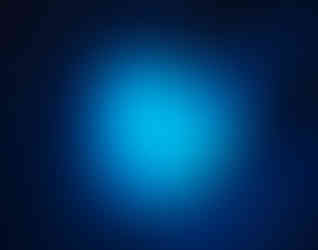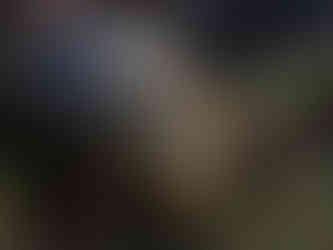Learning A New Skill: Macro Photography
- zode03030
- Aug 9, 2024
- 11 min read
Updated: Aug 18, 2024

Have you seen pictures of insects where you can clearly see the tiniest details, like individual hairs on a bee's back or the facets of a fly's eyes? How about a picture of a flower where you can make out the grains of pollen? This is called macro photography.

I have always been fascinated by macro photos, so when I started getting more serious about photography I really wanted to give it a try. In this article I will discuss my journey into taking macro photos and the things I have learned along the way. I will go over the gear you need as well as the techniques required to make the most of that gear. Lastly, I will touch on focus stacking: what it is, what software you can use to do it, and when focus stacking is most appropriate.
According to the articles I read and the videos I watched, I learned I needed a few new pieces of gear in order to take proper macro photos. Those items were: a macro lens, a flash, a diffuser, a tripod, and a focusing rail. I, of course, already had a tripod, and I didn't want to get too far into purchasing niche items without knowing I was going to enjoy macro photography, so I decided to start with the lens.
Shopping list item one: a lens.
When I decided to start trying macro photography I had just picked up the Tamron 18-300mm APS-C zoom lens. The literature for it showed up close photos of a slice of orange and it boasts a minimum focus distance of only 5.9 inches at 18mm and a 1:2 magnification ratio. This means that the subject in your picture is about half the size of what it is in real life and the lens can focus on it as close as 5.9in from your sensor. For macro photography, you usually have at least of 1:1 ratio, but 1:2 can be used to get somewhat macro style photos like the orange slice in the lens literature.

So for a little while I used this lens to try and get some close-up photos of flowers and icicles and I even took some pictures of ice that I found full of air bubbles with different lighting. This is how I created my "Ice" picture series, part of which you can see here.
But eventually 1:2 just wasn't enough; I needed to get closer and more detail! Especially since I knew that late spring was going to bring more bees and other insects out. As such, I looked at various macro lenses and eventually decided to get the Meike 60mm f/2.8 macro lens with a magnification ratio of 2:1, which means it has 2x magnification. I chose this lens based upon three things: price, reviews, and the name brand. As a third party manufactured, manual lens, the price was very affordable at only $179. The reviews pointed to a sturdy and functional lens that would be a great starting point for my foray into macro photography. Lastly, I already owned a Meike 25mm, f/1.8 lens that I had used to produce some fine pictures previously, so I already had some trust in the brand.

This lens opened up a whole new world for me to explore, though it was not without its challenges. Using a macro lens required me to make some slight adjustments to the way I take photos. The main adjustments I needed to make were my distance to the subject, the constant use of manual focus, and my expectations for light vs aperture.
Distance to Subject: You have to be closer than you might think
I mentioned the close focus distance possible with the Tamron lens, but being an 18 to 300mm zoom lens, you could easily be halfway across the yard and focus down on something at 300mm to get a picture. Not so with macro lenses. With macro, you are now subject to distance maximums, with the rule being: the higher the magnification, the shorter the limit. If you have ever used a microscope than you have likely experienced this: you get too far away as you try and focus and everything goes blurry. There is no infinity focus length on a macro lens.
With my new macro lens I found I needed to be just a few feet from my subject. If you think bout macro photos this really isn't surprising, but putting this into practice with a bee flitting from flower to flower can be a real eye opener. Note, if you decide to add one or more macro extension tubes this distance will get even shorter based upon the size of extension tube/s you are using. I ended up purchasing the Meike 10mm and 16mm extension tube set which increased my magnification substantially, but with both tubes I have to be inches from my subject.

Manual focus: Get comfortable working without assistance
This was not my first manual focus lens, but the combination of manual focus with a very short focal plane means even tiny adjustments make a big difference. When taking pics hand-held I found I needed to take multiple shots, moving ever so slightly closer and further from my subject in order to make sure I got the correct focus I wanted. There are macro lenses with autofocus, but based upon what I learned from experienced macro photographers, autofocus does not always get you what you want. If you are using a very still subject with a tripod or other stabilization device and you put your camera on spot focus, then an autofocus lens can work. Here is an example of a static subject: I picked some flowers and brought them inside, set up my camera on a tripod, and carefully selected a single shot.

However, if you are working with a moving subject, which is also usually done hand-held, then trying to keep your spot focus point on the exact spot of the subject you want is a lot to deal with. It is, as it turns out, much easier to set your focus and then move yourself around slightly until you get the exact focal point you want. Remember, we are working with a very thin focal plane, very close to the camera. Even the smallest sway forward and back will change your focus, so taking multiple shots and picking the one that focuses on the desired point of your subject is the easiest way to get you the look you want. Even more, if you are creating a focus stack (more on this later), even with a stationary subject and a tripod, the fixed adjustment that manual focus gives you is easier to use than trying to rely on the camera and lens focusing for you.

One setting which helped me was the focus peaking on my Sony camera. This is a function of the camera you can turn on and off which paints a false color on the edges of the area in focus. For mine I chose blue.


This has been very helpful, not only in individual photos but also when I am creating a focus stack. One thing to note is that the focus peaking on my Sony only works when you have enough light for the sensor to pick up detail. As such, you may need to raise the ISO enough to get the sensor to read if you want to use focus peaking. Speaking of light...
Light: You need more light than you think
The nature of a high magnification lens means that the amount of light hitting your sensor is typically less than you would get with a standard lens. This means you have to rebalance your use of aperture, ambient light, and ISO. A larger aperture (my lens goes down to f/2.8) means a shallower focal plane, so a smaller area of the subject is in focus with each picture. If I want to take a single photo rather than make a focus stack, I need to be at f/11 or higher. This means I need more light. Your options at this point are taking photos in bright sunlight or adding artificial light. Which brings us to our next shopping item: a flash.
Shopping list item two: a flash
Shortly after getting my macro lens I picked up a speedlight and small diffuser which is perfect for close range photography. You can get a usable speedlight for as low as $70 US, and a small diffuser for less than $20. This will make starting out and exploring the world of macro photography relatively affordable, and even if you decide not to continue with macro photography, your speedlight can be used for portraits or other cases where more light is needed.

Speedlights have a lot of different adjustments, so it can be easy to get confused when you first start taking pictures with one. Firstly, make sure to purchase a speedlight that works with your specific camera. The most affordable flashes, as well as some of the most expensive and well respected, are made by third parties. Each brand of camera has its own functionality, so the flash needs to be matched up accordingly. I recommend finding an online video or article specific to your camera and flash to get you started.

So, now I had my camera, my lens, my speed light, and a small but effective diffuser; I was ready to start taking photos. But photos of what??
Well, even though it was getting later in Spring it was still quite cool, so the number of insects about was not especially high, at least not in my yard. I did have a lot of very pretty flowers at my disposal, so I decided to start there.

Here I took a photo of a cherry blossom on our tree. This was excellent practice and gave me a significant amount of education on focusing for macro photography as well as adjusting for light and aperture. As discussed previously, to get as much of the flower in focus as possible I needed to increase my aperture, which in turn made it so I needed my flash to provide proper illumination. Because my focus peaking was at minimal function due to the lower light, I took multiple photos, adjusting slightly with each one to attempt to get the best photo I could. Often you won't know for certain you got a really good photo until you load them onto your computer, so always take more photos than you think you might need to give yourself the best odds of getting a well focused, well lit macro photo.
Speaking of taking a lot of photos:
Focus Stacking: How to do it and software needed.
Focus stacking is the process by which a series of photos are taken where the focus is shifted a little bit at a time and the focus of the next photo should slightly overlap the focus of the last. In the end you will have a set of photos that in total will have every intended piece of your subject in focus. The number of pictures required will depend upon how wide your focal plane is; the wider your focal plane, the more you have in focus with each picture and therefore the fewer photos you will need to cover your subject. Some cameras will even do this for you in-camera. The OM System series is well known for this and are therefore well regarded amongst the macro photographers I follow, even if they don't have an OM System camera themselves.

If you don't have a camera that will focus stack for you then you will need a focus rail and a lot of individual pictures. You also need a fairly stationary subject. There are exceptions to this, which I will discuss in a moment, but for those starting out, your first focus stack is going to be easiest to make using a tripod, a focus rail, and a subject that will stay in place while you set up and then take anywhere from tens to hundreds of photos.
When taking a photo series you intend to stack, start with your camera in the middle of the focus rail.

Get your tripod to the right height and your camera tilted and aimed at your subject. Next, get your lens focused on part of the subject that will be in the middle of your photo series.

For example, if you are taking a picture of a stationary insect (like one that died of natural causes), get your camera focused up on the eyes or the middle of the head. In the picture above, I started my focus in the middle of the thorax. The front of the head and the abdomen are both out of focus. Once you have your focus, crank your focus rail (assuming it isn't automatic) back until the closest portion of your subject is just barely in focus.
This is also a great time to figure out how big your focal plane is and therefore figure out how much you can move and keep your focus planes overlapping. Again, a function like focus peaking will help a lot here, as you can make sure your colored areas overlap with each shot. Finally, start taking pictures. After each picture, rotate the crank to move the slide forward, shifting your focus further along your subject. Make sure you only crank enough to get your focus planes to overlap. I found two pictures per rotation of my focus rail is a great number when taking very close photos. Keep taking photos and cranking forward until your focus is on the furthest portion of your subject you want in focus. Congratulations, you just took your first photo stack series! If you decide you want to take a few series just to be sure you got it all, just crank the slider back to start and do it again. I usually take a photo of my hand in front of the lens to show me where one series stops and the next begins when I load them on my computer, as you are going to end up with a lot of pics that all look the same when looking at icons.

Next you need software to stack them. If you already have and use Photoshop, you can load up your photos as layers and get the software to stack them for you. The drawback to Photoshop is that it can take a long time to stack a large number of photos. Make sure you close out any other programs you might be running so all your processing can go towards the stack.
Another option, one that I have and use, is Helicon Focus 8. Helicon Focus 8 uses a different method for stacking photos and therefore is much faster than Photoshop. It has three different options for how it determines the stack and alignment, and I often try all three and pick which one looks the best.

Helicon Focus 8 has a lot of trouble with photos if you don't have them lined up right. Photos where you or your subject moves around causing the subject to be in different places in each photo will cause a lot of fragments of your subject to show up in the final photo. Photoshop is better at aligning you photos if you didn't use a focus rail or had a moving subject, like a flower gently moving in the breeze.
So besides having a camera that will take multiple focus stack photos in quick succession, another option for trying to focus stack is setting your camera to burst mode and then holding down your shutter button while slowly leaning in towards your subject. This method takes a lot of practice and is one I am still working on. This method also matches up better with using Photoshop to stack or manually aligning your photos before trying to stack them, as there will be variation in the location of your subject. The good news is this method is quick to do and so you will likely get a few chances to get a stack before your subject flies or moves away.
The last option for focus stacking is to do it completely manually. This works best if you only have a couple photos. If you load them into a photo editor that allows you to use layers, then put your photos in order in those layers, you can erase parts of each photo that are out of focus, revealing the photo behind which is in focus. It's a tedious process, but if you are able to get the whole of your subject in two or three photos it is totally doable.

In Summary
So, for Macro Photography you will need:
a macro lens,
a flash with diffuser,
a focus rail
and a tripod.
You will also want to look into software that will allow you to load and edit your photos, as well as stack them for those truly impressive shots. The Ten Line June Beetle at the start of this post was comprised of 149 individual shots that were stacked in Helicon Focus 8.
But as I learned, you only need a lens to get started, and the best thing about macro is the availability of subjects in your own house or back yard. For tips on finding subjects in your yard, see my article HERE regarding practicing photography in your yard.

















コメント